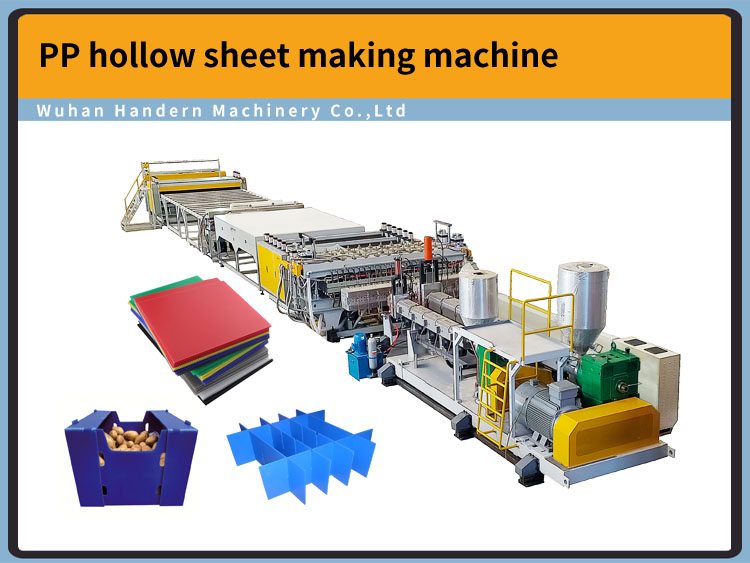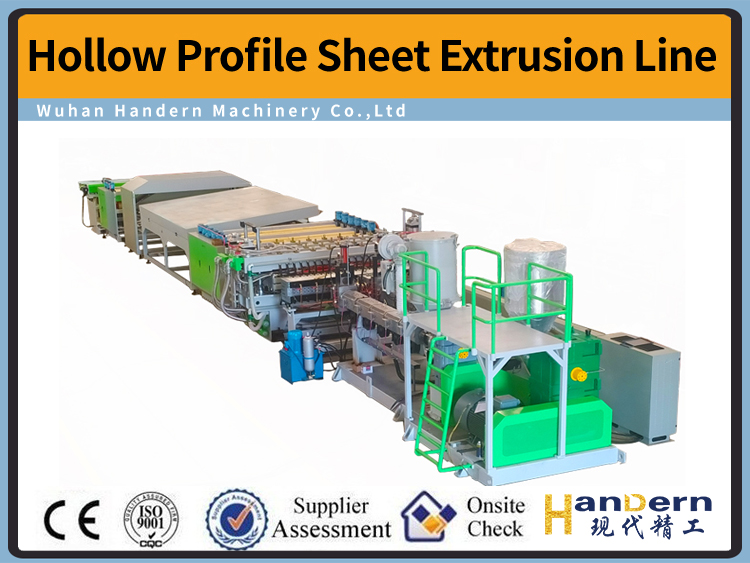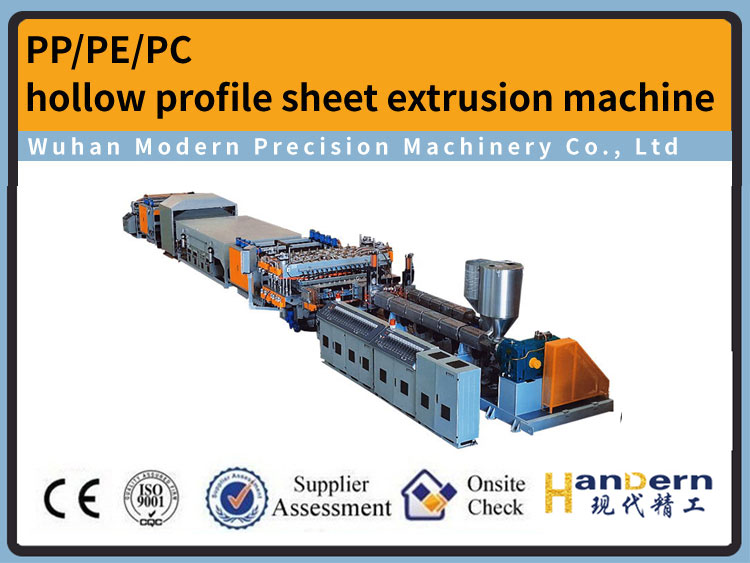Wuhan Handern Molding Technology
DATE:2020/12/14 10:55:41 / READ: / SOURCE:This station
Wuhan Handern Molding Technology
1 molding process
The molding process includes: ① weighing the molding compound and pre-pressing the ingot; ② preheating the molding compound or pressed ingot; ③ feeding the mold cavity or charging chamber; ① low-pressure closing mold: ⑤ venting; ⑥ high-pressure closing and maintaining pressure and curing ⑦Open the mold and eject the parts; ⑧Clean the mold and install the insert. According to different material types and product structures, the above items are different. The main points are as follows:
(1) Adding materials Powder, pellets or ingots can be added, and gravimetric, volumetric and counting methods (referring to ingots) can be used. The weight method is accurate and the volume method is convenient. When adding materials, stack them reasonably, especially for materials with low fluidity. handern.com melt blown nonwoven fabric equipment
(2) The pre-compacted ingot compresses the loose powder or fibrous thermosetting molding compound into a compact solid with a certain weight and a regular shape by cold pressing. The shape similar to the product is called a parison. There is no strict limit, and it is usually in the form of a disc. Because the die is simple, easy to operate, and less damaged during operation, various preheating methods can be used, and the weight of the material is easy to adjust. For molding materials with poor fluidity or products that are difficult to form, a parison with a shape similar to the product is often used, but it is not suitable for high-frequency preheating. Products with fine inserts often use hollow bodies or two-petal hollow bodies to improve the weldability around the insert and ensure that the insert is not deformed.
The use of pre-pressing has the following advantages: ①Fast feeding, accurate, and no dust; ②Reduce the compression rate, thereby reducing the mold loading chamber and the height of the mold; ③The pre-compression is compact, fast heat transfer, and can increase the heat temperature. The preheating and curing time is shortened, and the products are not prone to bubbles; ④It is convenient to form larger products or products with fine inserts. handern.com melt blown nonwoven fabric equipment
The moisture, particle size, compression rate, pressure, etc. of the molding compound are related to the quality of the preload. Therefore, the molding compound has the following requirements: ① Too dry molding compound is not conducive to pre-compression, and too much will affect the quality of the product: ② The particles should preferably be in different sizes, moderate in thickness, and large particles have more voids, low strength, and fine particles. It is easy to contain air and large dust; ③The compression rate is about 3.0, and it is too difficult to pre-press; the pre-compression pressure should be 80% of the product density, generally 39-196MPa (400~2000kg/cm2 ); ⑤ Lubricant can be appropriately added to facilitate demolding, and individual molding compounds can be pre-pressed at 50-90°C. melt blown nonwoven fabric equipment
Pre-compression equipment generally adopts mechanically driven eccentric and rotary pre-compressors. The former generally has a total pressure of 9.8×104~5.88×105N (10-60 ton force), and the pre-compression frequency is 8-60 times/min. Press 1~6 products. This type of press is not efficient. However, it is suitable for pre-compacted objects of larger size. Rotary pre-presses are commonly used (2.45~3.43) x104N (2.5-3.5 ton force), and the productivity is higher. The pre-compression amount is 250-1200 products per minute, but it is only suitable for pre-pressing. Press small size pre-compact. At present, the most widely used hydraulic pre-press is its simple structure, convenient operation, high production efficiency and accurate measurement. handern.com melt blown nonwoven fabric equipment
(3) Preheating thermosetting plastics The purpose of preheating before molding is to: ① shorten the molding time, improve the fluidity of the plastic, and improve the uniformity of curing, so as to improve the quality of the product and reduce the rejection rate; ② it can reduce the molding pressure, and the molding flow Inferior plastics or making larger products ③ can also play a role in drying resins with larger moisture to improve product quality. ,
Preheating equipment includes oven, infrared heating, high frequency electric heating, vacuum drying and other methods. Among them, high frequency preheating and infrared heating are the most widely used, with short heating time and high efficiency.
(4) Mold closing. When the male mold has not touched the material, the high-speed mold is applied, that is, when the material is touched, the speed is reduced and the mold is slowly closed to prevent too much air or blowing away the powder. The closed mold generally uses 49MPa (50kgf/cm2) low pressure.
(5) Exhaust After the mold is closed, the material is heated to soften, melt, and start a cross-linking condensation reaction. The by-products are water or low-molecular substances, so exhaust is required to improve product quality. Preheated, especially high-frequency preheated molding compound or ingots can reduce exhaust blowing or no exhaust, and polyaddition resin does not require exhaust.
(6) High-pressure closing of the mold and pressure-maintaining curing. After exhaust, the mold is closed at a slow speed and high-pressure, and maintained under the pressure of the mold until the product is cured to meet the requirements. The pressure depends on the projected area of the product and the type of molding compound. The curing depends on the type of plastic, the original degree of the product, the form of the material, the preheating condition and the mold temperature.
1 molding process
The molding process includes: ① weighing the molding compound and pre-pressing the ingot; ② preheating the molding compound or pressed ingot; ③ feeding the mold cavity or charging chamber; ① low-pressure closing mold: ⑤ venting; ⑥ high-pressure closing and maintaining pressure and curing ⑦Open the mold and eject the parts; ⑧Clean the mold and install the insert. According to different material types and product structures, the above items are different. The main points are as follows:
(1) Adding materials Powder, pellets or ingots can be added, and gravimetric, volumetric and counting methods (referring to ingots) can be used. The weight method is accurate and the volume method is convenient. When adding materials, stack them reasonably, especially for materials with low fluidity. handern.com melt blown nonwoven fabric equipment
(2) The pre-compacted ingot compresses the loose powder or fibrous thermosetting molding compound into a compact solid with a certain weight and a regular shape by cold pressing. The shape similar to the product is called a parison. There is no strict limit, and it is usually in the form of a disc. Because the die is simple, easy to operate, and less damaged during operation, various preheating methods can be used, and the weight of the material is easy to adjust. For molding materials with poor fluidity or products that are difficult to form, a parison with a shape similar to the product is often used, but it is not suitable for high-frequency preheating. Products with fine inserts often use hollow bodies or two-petal hollow bodies to improve the weldability around the insert and ensure that the insert is not deformed.
The use of pre-pressing has the following advantages: ①Fast feeding, accurate, and no dust; ②Reduce the compression rate, thereby reducing the mold loading chamber and the height of the mold; ③The pre-compression is compact, fast heat transfer, and can increase the heat temperature. The preheating and curing time is shortened, and the products are not prone to bubbles; ④It is convenient to form larger products or products with fine inserts. handern.com melt blown nonwoven fabric equipment
The moisture, particle size, compression rate, pressure, etc. of the molding compound are related to the quality of the preload. Therefore, the molding compound has the following requirements: ① Too dry molding compound is not conducive to pre-compression, and too much will affect the quality of the product: ② The particles should preferably be in different sizes, moderate in thickness, and large particles have more voids, low strength, and fine particles. It is easy to contain air and large dust; ③The compression rate is about 3.0, and it is too difficult to pre-press; the pre-compression pressure should be 80% of the product density, generally 39-196MPa (400~2000kg/cm2 ); ⑤ Lubricant can be appropriately added to facilitate demolding, and individual molding compounds can be pre-pressed at 50-90°C. melt blown nonwoven fabric equipment
Pre-compression equipment generally adopts mechanically driven eccentric and rotary pre-compressors. The former generally has a total pressure of 9.8×104~5.88×105N (10-60 ton force), and the pre-compression frequency is 8-60 times/min. Press 1~6 products. This type of press is not efficient. However, it is suitable for pre-compacted objects of larger size. Rotary pre-presses are commonly used (2.45~3.43) x104N (2.5-3.5 ton force), and the productivity is higher. The pre-compression amount is 250-1200 products per minute, but it is only suitable for pre-pressing. Press small size pre-compact. At present, the most widely used hydraulic pre-press is its simple structure, convenient operation, high production efficiency and accurate measurement. handern.com melt blown nonwoven fabric equipment
(3) Preheating thermosetting plastics The purpose of preheating before molding is to: ① shorten the molding time, improve the fluidity of the plastic, and improve the uniformity of curing, so as to improve the quality of the product and reduce the rejection rate; ② it can reduce the molding pressure, and the molding flow Inferior plastics or making larger products ③ can also play a role in drying resins with larger moisture to improve product quality. ,
Preheating equipment includes oven, infrared heating, high frequency electric heating, vacuum drying and other methods. Among them, high frequency preheating and infrared heating are the most widely used, with short heating time and high efficiency.
(4) Mold closing. When the male mold has not touched the material, the high-speed mold is applied, that is, when the material is touched, the speed is reduced and the mold is slowly closed to prevent too much air or blowing away the powder. The closed mold generally uses 49MPa (50kgf/cm2) low pressure.
(5) Exhaust After the mold is closed, the material is heated to soften, melt, and start a cross-linking condensation reaction. The by-products are water or low-molecular substances, so exhaust is required to improve product quality. Preheated, especially high-frequency preheated molding compound or ingots can reduce exhaust blowing or no exhaust, and polyaddition resin does not require exhaust.
(6) High-pressure closing of the mold and pressure-maintaining curing. After exhaust, the mold is closed at a slow speed and high-pressure, and maintained under the pressure of the mold until the product is cured to meet the requirements. The pressure depends on the projected area of the product and the type of molding compound. The curing depends on the type of plastic, the original degree of the product, the form of the material, the preheating condition and the mold temperature.
Author:admin




